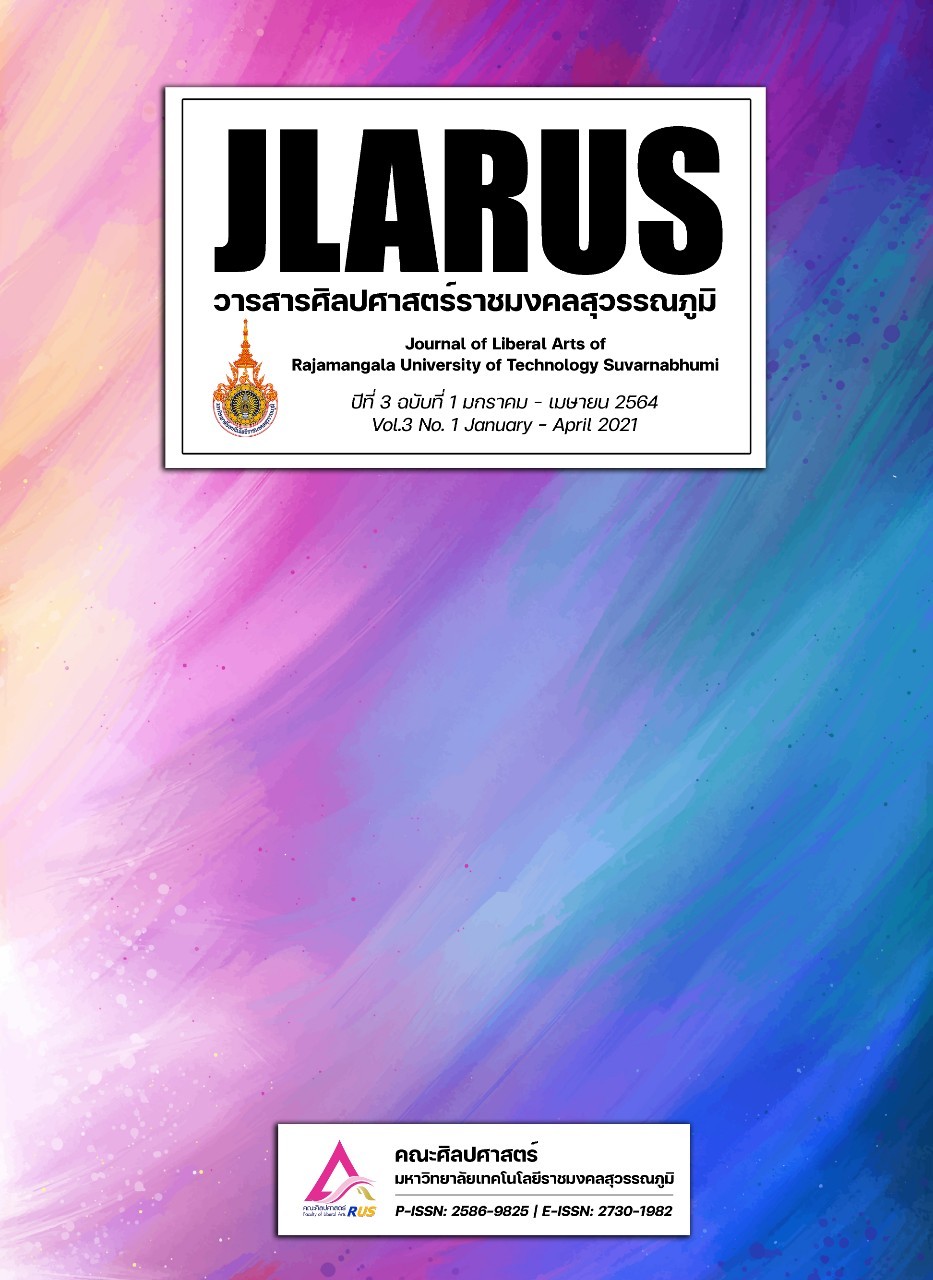ACADEMIC TRANSLATION TECHNIQUE : COMMON LEXICAL AND STRUCTURAL ERRORS IN THE THAI ACADEMIC DOCUMENTS TRANSLATION INTO ENGLISH
Main Article Content
Abstract
Translation is a form of communication between two different languages which has served as a mechanism for cross-cultural communication for a long time in Thailand. Nowadays, the translation of academic documents from Thai to English plays an important role in disseminating knowledge arising in Thailand and transferring them to other countries that leads to knowledge transferring and exchanging, resulting in mutual learning and development in various fields. However, cultural differences in communication as well as the level of lexical and structural meaning of the language often cause translation problems that are rooted by a lack of proper understanding of words or sentence structures meaning including thinking process in Thai language before transferring into English that the translator still adheres to the Thai language structure, which makes English communication differ from reality. Therefore, understandingthe true meaning and way of using English words and sentence structure correctly will be useful for translating academic documents from Thai to English to make the translations be accurate, elegant, natural and meet the objectives that the author wants to convey.
Article Details
References
กังสดาล ญาณจันทร์ และ ศีตกาล ศรีฉัตร. (2560). การแปลคำสรรพนามต่างบริบทในเรื่องสั้น.วารสารวิชาการ มทร. สุวรรณภูมิ (มนุษยศาสตร์และสังคมศาสตร์), 2(2), 169-178.
จักกเมธ พวงทอง.(2560). สนุกกับการแปล.กรุงเทพมหานคร: แดเน็กซ์อินเตอร์คอร์ปอเรชั่น.
ชณัณกร เพ็ชรวัฒนา. (2562). วารสารการแปลและการล่าม.กรุงเทพมหานคร: สมาคมนักแปลและล่ามแห่งประเทศไทย.
ดวงตา สุพล. (2541).กลวิธีและทฤษฎีการแปล.(พิมพ์ครั้งที่ 3). กรุงเทพมหานคร: จุฬาลงกรณ์มหาวิทยาลัย.
ทิพา เทพอัครพงศ์. (2547).การแปลเบื้องต้น.กรุงเทพมหานคร: จุฬาลงกรณ์มหาวิทยาลัย.
พรศิริ อูปคำ. (2557). การใช้วิธีสอนตามทฤษฎีคอนสตรัคชั่นนิสซึ่มเพื่อส่งเสริมความสามารถทางการพูดภาษาอังกฤษของนักเรียนระดับประกาศนียบัตรวิชาชีพ สาขาการท่องเที่ยว. วารสารมนุษยศาสตร์และสังคมศาสตร์ มหาวิทยาลัยพะเยา, 2(2), 83-93.
พัชรี โภคาสัมฤทธิ์. (2555). การแปลสิ่งทดแทนทางวัฒนธรรมจากภาษาอังกฤษเป็นภาษาไทย. (รายงานการวิจัย). สถาบันบัณฑิตพัฒนบริหารศาสตร์.
วรนารถ วิมลเฉลา.(2543). คู่มือสอนแปล.(พิมพ์ครั้งที่ 6). กรุงเทพมหานคร: โรงพิมพ์จุฬาลงกรณ์มหาวิทยาลัย.
สัญฉวี สายบัว. (2538). หลักการแปล. กรุงเทพมหานคร: มหาวิทยาลัยธรรมศาสตร์.
สิทธา พินิจภูวดล. (2543).คู่มือนักแปลอาชีพ.กรุงเทพมหานคร: นานมีบุ๊คส์.
สุพรรณี ปิ่นมณี. (2554).การแปลขั้นสูง.กรุงเทพมหานคร:จุฬาลงกรณ์มหาวิทยาลัย.
สุพรรณี ปิ่นมณี. (2555). แปลผิด แปลถูก.กรุงเทพมหานคร:จุฬาลงกรณ์มหาวิทยาลัย.
อัจฉรา ไล่สัตรูไกล. (2548). หลักการและวิธีการแปล. กรุงเทพมหานคร: สำนักพิมพ์มหาวิทยาลัยรามคำแหง
อัจฉรา ไล่สัตรูไกล. (2555). จุดมุ่งหมาย หลักการและวิธีการแปล.ใน เอกสารประกอบการสอน รายวิชา EN 322. กรุงเทพมหานคร: สำนักพิมพ์มหาวิทยาลัยรามคำแหง
Cambridge University. (2013). Cambridge Advance Learner’s Dictionary. Cambridge: Cambridge University Press.
Hatim, B. and I.Mason. (1990). Discourse and the Translator. New York: Longman.
Longman. (2005).Longman Dictionary of Contemporary English. Harlow, Essex: Longman Group.
Oxford University. (2004). Oxford Advance Learner’s Dictionary. Oxford: Oxford University Press.


